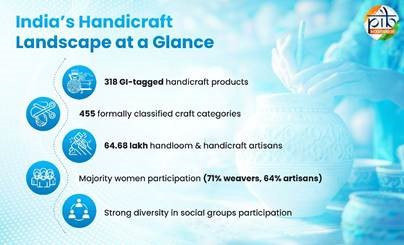Copyright infringement not intended
Picture Courtesy: Indian Express
Context:
India’s banking and financial services sector has transformed from a tightly regulated and fragmented market into one of the fastest-growing destinations for global investment. Over the past two years, major international players like Dubai’s Emirates NBD, Japan’s SMBC, Blackstone, Zurich Insurance, and Abu Dhabi’s IHC have acquired stakes in Indian banks, insurers, and NBFCs, signaling a renewed global interest.
Current Status:
- In FY 2024‑25, India recorded gross FDI inflows of US$ 81.04 billion, a 14% year‑on‑year increase. (Source: PIB)
- Net FDI (inflows minus outflows/repatriation) plunged to just US$ 353 million in FY 2024‑25, a decline of 96.5% from the prior year—largely due to large recovery of investments and heavy repatriation.(Source: PIB)
- According to Financial Stability Report of RBI, the Indian banking market’s total interest income in 2024 was about ₹ 11,09,730 crore (US$ 128.1 billion) for public banks; private banks earned about ₹ 8,29,049 crore (US$ 95.7 billion).
Factors Driving Foreign Investments:
- Strong Economic Growth: India’s economy is expected to grow at 6.8% (RBI estimate), offering a robust credit market.
- Expanding Financial Market: Over 400 million people remain underbanked, and digital banking adoption is rising rapidly.
- Regulatory Reforms: Foreign ownership limits have been eased – insurance companies can have 100% foreign ownership, and private banks up to 74% with approval.
- High Profitability: India’s banking sector generated $46 billion in 2024, growing 31% YoY, with strong liquidity and reduced credit risk (McKinsey & Co.).
- Market Access: Acquiring existing banks allows foreign players immediate access to customers, branch networks, and licenses, avoiding the decades-long process of building a new banking footprint.
Advantages for Foreign Investors:
- Access to a large and growing consumer base.
- Political stability and credible regulatory oversight.
- Geographic diversification compared to Europe or the US.
- Opportunity to invest in a financially expanding and digitizing market.
Benefits for India:
- Infusion of Capital: Foreign investments bring significant funds into banks, NBFCs, and insurance companies, supporting credit expansion, lending to businesses, and infrastructure growth. For example:
- Emirates NBD’s $3 billion investment in RBL Bank
- SMBC’s $1.6 billion in Yes Bank
- Enhanced Technology & Expertise: Global players introduce advanced banking technologies, risk management systems, and digital platforms, improving efficiency and customer experience. This helps Indian banks modernize faster than domestic capital alone could allow.
- Strengthened Financial Stability: Foreign ownership can increase capitalization and improve governance, reducing non-performing assets and enhancing transparency in operations.
- Boost to Credit & Economic Growth: With additional capital, banks can expand retail and corporate lending, facilitating business growth, employment generation, and economic development.
- Global Integration & Market Confidence: Foreign stakes signal international confidence in India’s economy, attracting more global capital and potentially lowering borrowing costs for Indian banks.
- Access to Global Networks: Collaborations with multinational institutions provide Indian banks entry into international markets, cross-border financing opportunities, and exposure to best practices in investment banking and wealth management.
Challenges:
- Potential Loss of Domestic Control: When foreign entities acquire majority stakes, strategic decisions could increasingly reflect offshore interests, which may not always align with India’s domestic priorities.
- Exposure to Global Economic Shocks: Foreign-owned banks may be influenced by international interest rate changes, liquidity crises, or geopolitical tensions, potentially affecting credit flow and stability in India.
- Regulatory and Compliance Complexity: Large foreign stakes require strict adherence to RBI and SEBI norms. As deals grow in size and complexity, ensuring proper oversight becomes more challenging.
- Unequal Competitive Landscape: Foreign institutions often have cheaper global funding and advanced risk management systems, which could disadvantage domestic banks and NBFCs, especially smaller players.
- Strategic Vulnerabilities: Control over critical financial infrastructure by foreign entities could pose risks to financial sovereignty, particularly during crises or trade conflicts.
- Profit Repatriation: Foreign investors may repatriate profits abroad, which can impact domestic capital accumulation and reinvestment in the Indian economy.
RBI initiatives to manage foreign investment in Indian Banking sector:
Regulating Foreign Ownership Limits
- RBI has gradually increased foreign ownership caps:
- Private banks: up to 74% with prior approval.
- Insurance companies: up to 100% foreign ownership.
- Ensures foreign capital inflow while maintaining domestic regulatory control.
Fit-and-Proper Guidelines
- All foreign investors must meet RBI’s “fit and proper” criteria to ensure reliability and financial stability.
Capital Adequacy & Compliance Norms
- RBI enforces Basel III capital requirements to ensure banks maintain strong liquidity and risk buffers.
- Foreign-owned banks are required to comply with same domestic prudential norms as Indian banks.
Approval for Strategic Stake Purchases
- RBI assesses major acquisitions or stake increases to ensure they do not compromise financial sovereignty or domestic stability.
- Example: Special approval granted to Fairfax for CSB Bank beyond the normal 40% cap.
Monitoring Systemic Risks
- RBI monitors foreign entities’ exposure to global market volatility, ensuring potential shocks do not destabilize domestic banking.
Encouraging Responsible Capital Inflow
- RBI aims to balance foreign investment with financial stability, allowing growth while safeguarding India’s economic interests.
Way Forward:
Strengthen Regulatory Oversight
- RBI should continue monitoring foreign ownership, ensuring strategic decisions align with domestic financial stability.
- Implement a clear framework defining permissible control levels for foreign investors.
Encourage Responsible Investment
- Promote long-term strategic investments rather than short-term speculative inflows.
- Ensure foreign capital contributes to financial inclusion, credit expansion, and infrastructure development.
Maintain Capital Adequacy & Risk Management
- Enforce strict compliance with Basel III norms for all banks, including foreign-owned entities.
- Monitor exposure to global shocks, including interest rate changes and trade tensions.
Foster Domestic Competitiveness
- Support Indian banks and NBFCs in digital innovation, risk management, and capital access.
- Prevent market distortion from foreign banks with cheaper global funding.
Enhance Financial Independence
- Limit foreign control in critical banking functions while allowing collaboration in growth areas.
- Strengthen domestic financial infrastructure to reduce vulnerability to external crises.
Promote Transparency & Governance
- Mandate disclosures on ownership, governance, and risk exposure.
- Ensure alignment with India’s economic goals while allowing foreign expertise and capital inflow.
Conclusion:
The surge of foreign investment in Indian banks reflects global confidence in the country’s robust economic growth, large consumer base, and evolving financial sector. While this inflow brings capital, technology, and expertise, it also poses challenges in governance, financial stability, and alignment with domestic policy goals.
Through careful regulatory oversight, strategic policy measures, and risk management, India can harness foreign investment to strengthen its banking sector, expand financial inclusion, and drive economic growth, without compromising financial independence. Balancing foreign participation with domestic control will be key to ensuring that India’s banking sector remains resilient, innovative, and globally competitive.
This sets the stage for India to emerge as a leading financial hub in Asia, attracting capital while safeguarding its economic sovereignty.
Source: Indian Express
|
Practice Question:
Q. Examine the recent trend of foreign investment in Indian banks. Discuss its benefits, challenges, and the role of regulatory measures in ensuring financial stability. Suggest a way forward for India to balance growth with economic sovereignty. (250 Words)
|
Frequently Asked Questions (FAQs)
India offers a rapidly growing financial market, strong macroeconomic fundamentals, a large underbanked population, and digital infrastructure, making it attractive for long-term investment.
Private banks, insurance companies, and non-banking financial companies (NBFCs) are the primary targets.
It brings capital inflows, advanced technology, global expertise, and better risk management practices.











